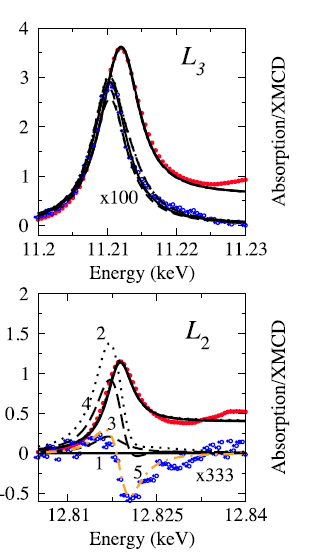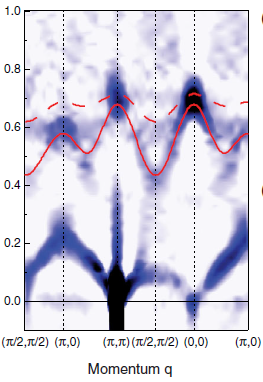|
Pressure-tuning of spin-orbit coupled ground state in Sr2IrO4
D. Haskel, G. Fabbris, M. Zhernenkov, K. Panpan, C. Jin, G. Cao, and M. van Veenendaal, Phys. Rev. Lett. 109, 027204 (2012).
X-ray absorption spectroscopy studies of the magnetic-insulating ground state of Sr2IrO4 at ambient pressure show a clear deviation from a strong spin-orbit (SO) limit Jeff=1/2 state, a result of local exchange interactions and a nonzero tetragonal crystal field mixing SO split Jeff=1/2, 3/2 states. X-ray magnetic circular dichroism measurements in a diamond anvil cell show a magnetic transition at a pressure of 17 GPa, where the ‘‘weak’’ ferromagnetic moment is quenched despite transport measurements showing insulating behavior to at least 40 GPa. The magnetic transition has implications for the origin of the insulating gap and the nature of exchange interactions in this SO coupled system. The expectation value of the angular part of the SO interaction, extrapolates to zero at �80–90 GPa where an increased bandwidth strongly mixes Jeff=1/2, 3/2 states and SO interactions no longer dominate the electronic ground state of Sr2IrO4. |
Magnetic excitation spectra of Sr2Ir2O4 probed by resonant inelastic x-ray scattering: establishing links to cuprate superconductors
J. H. Kim, D. Casa, M. H. Upton, T. Gog, Y.-J. Kim, J. F. Mitchell, M. van Veenendaal, M. Daghofer, J. van den Brink, G. Khaliullin, and B. J. Kim, Phys. Rev. Lett. 108, 177003 (2012).
We used resonant inelastic x-ray scattering to reveal the nature of magnetic interactions in Sr2IrO4, a 5d transition-metal oxide with a spin-orbit entangled ground state and Jeff=1/2 magnetic moments. The magnon dispersion in Sr2IrO4 is well-described by an antiferromagnetic Heisenberg model with an effective spin one-half on a square lattice, which renders the low-energy effective physics of Sr2IrO4 much akin to that in superconducting cuprates. This point is further supported by the observation of exciton modes in Sr2IrO4, whose dispersion is strongly renormalized by magnons, which can be understood by analogy to hole propagation in the background of antiferromagnetically ordered spins in the cuprates. |


